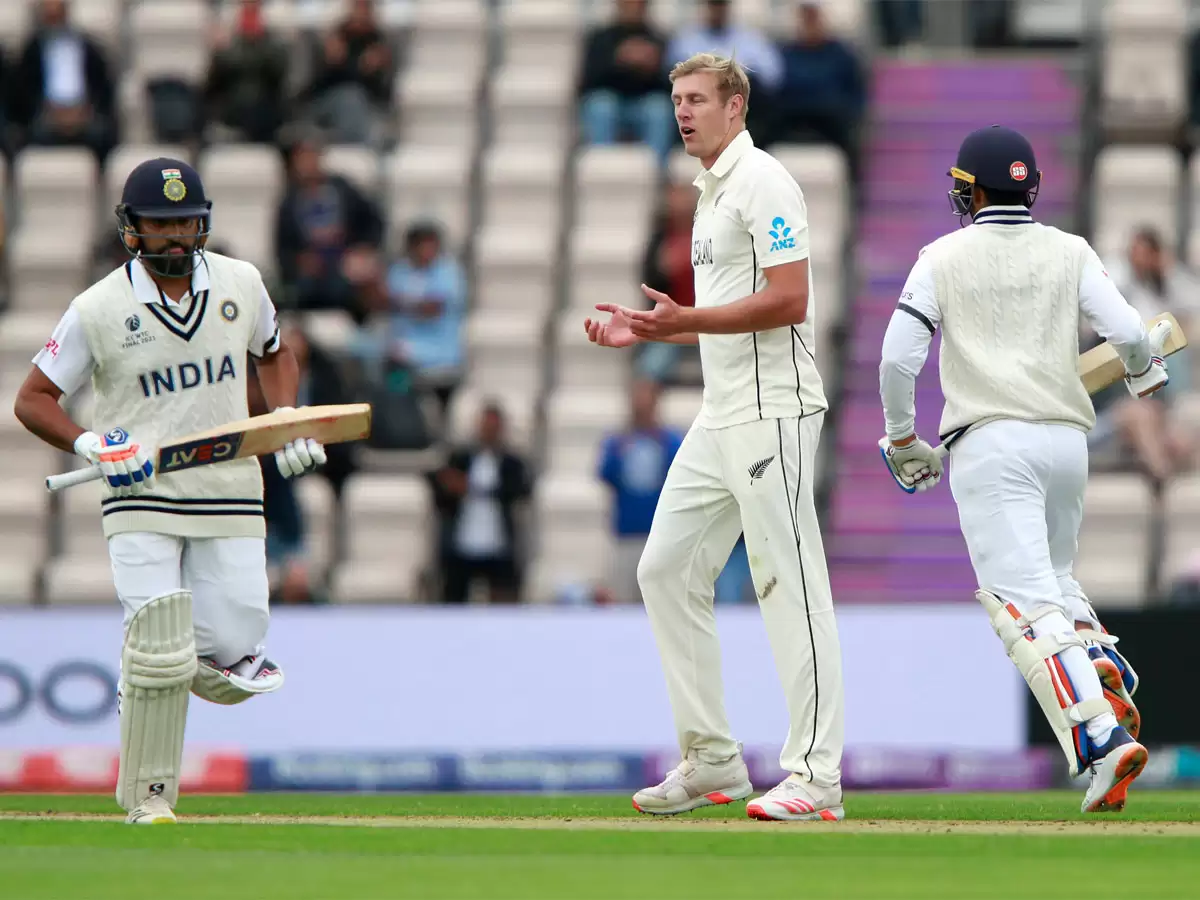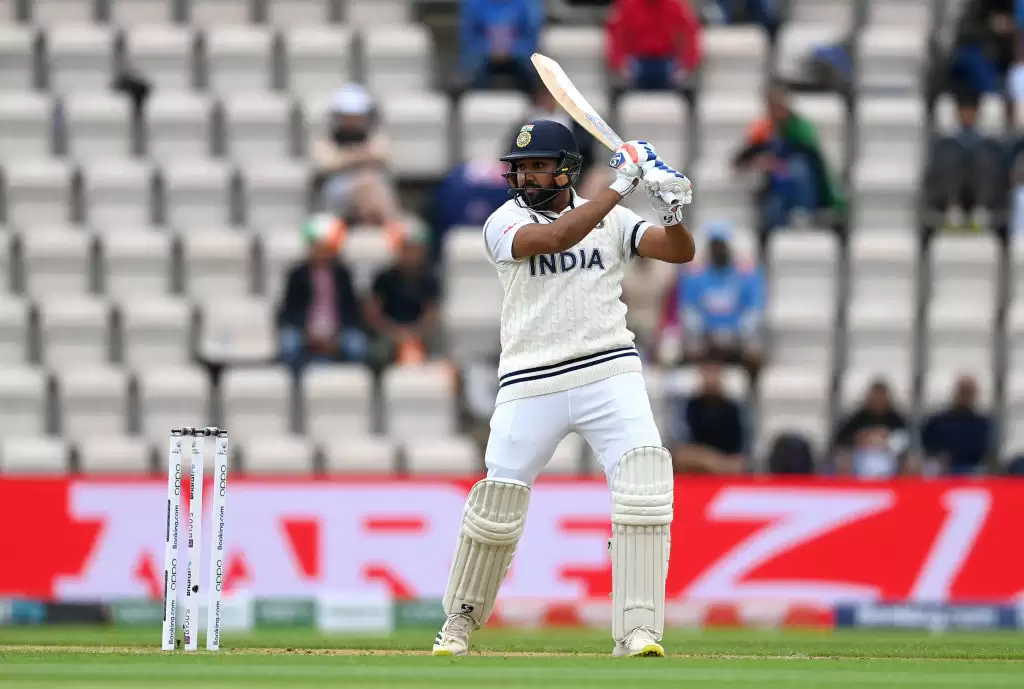
According to Cricviz, India’s average interception point at the start of their innings on Saturday (June 19) was 2.27m from the stumps. This, as per the ball tracking data recorded by the company since 2006, is the second furthest down the track that India had ever batted against the new ball. The stats backed up […]


According to Cricviz, India’s average interception point at the start of their innings on Saturday (June 19) was 2.27m from the stumps. This, as per the ball tracking data recorded by the company since 2006, is the second furthest down the track that India had ever batted against the new ball.
The stats backed up what was happening on the field, as Rohit Sharma and Shubman Gill played through the first hour of play – which was expected to be the toughest for batting – quite comfortably against a New Zealand attack known for their ability to swing the ball prodigiously and seam it off the track.
Their method followed a template put to great use by India captain Virat Kohli, who, since that 2018 trip to the UK, has battled outside the crease to try and smother the swing but ensures he doesn’t shift from the basics of playing the ball as late as possible and not pushing at the ball with hard hands outside off stump.
Also Read: How Good Is Virat Kohli – India Vs New Zealand WTC Final Day 2 Talking Points

Rohit Sharma in WTC final (pic courtesy: Twitter/Wisden)
Both Rohit and Gill looked clear and confident in their method at the crease. And though the Kiwis were undoubtedly not at their best in the first hour – with Southee and Boult not showing the level of consistency associated with them – it would be unfair to take the credit away from the two openers for the crucial 62-run stand they provided.
After the day’s play on Day 1, batting coach Vikram Rathour said the aim was to not just counter the swing but also be ready to pounce on any scoring opportunity.
“I think it had both the factors. Of course countering the swing, as well, and the discussion we’ve had as a batting group is that we need to be looking to score runs where we can,” Rathour told reporters.
“If you get a loose ball, we need to make it count. I think we could see throughout the day that though we showed a lot of discipline, but I think we looked to score runs whenever there was an opportunity, and that was good to see.”
Neither Indian opener scored a single run off good length deliveries, but the opening partnership went at rate of over 3rpo. Brilliant batting
Hugely impressed by Gill, and Rohit the Test batter today is a far cry from the batter he used to be.
Pitch maps from ICC website. pic.twitter.com/sNuvHJYlit
— Rohit Sankar (@imRohit_SN) June 20, 2021
Both the Indian batsmen were willing to bide through that phase and wait for the loose ball. As the above pitch maps show, they played out the good length balls – delivered in that indecisive area – but still managed to take India to 41/0 in the first 11 overs by simply cashing in balls that were too short or too full.
Before the lacquer wore off to provide a genuine contrast between the two sides and aid swing, New Zealand quicks dropped quite a few balls off the radar, near the pads of the two Indian batsmen. It was the kind of respite India needed in those conditions. But once the ball got slightly old and the Kiwis got the chance to reflect and assess post drinks, they were back to their best.
Kyle Jamieson, who got Rohit out caught behind to lead New Zealand’s comeback, said there was no obvious change in their plans after the first hour, just they found more control and wickets sticking to their strengths and not searching for that magic ball or going after wickets.
“I think that you look at their lineup, you’re always expecting those guys to play well. I think they’ve got pretty good records and they’ve done some pretty special things around the world, so we always knew it was going to be a challenge. They certainly played well through that first hour,” he said.
“They put away any sort of slightly bad ball and hit it for four basically or were able to score quite freely, whereas probably times in the past you sort of bowl one that’s maybe not quite there and teams will leave it or not score as freely, so they certainly played pretty well for that first hour, and yeah, in terms of trying to change between swing and seam, I think all the guys were just playing around with whether we tried to wobble the ball a bit more and try and keep guys engaged or whether we were trying to move it a little bit.”
“Yeah, it’s probably part of our arsenal around how we used that ball, but there was no sort of set plans on how we wanted to operate post that first hour or post lunch.”
Once the Black Caps got their act right, batting and run-scoring became significantly tougher for the Indians, something that reflected in the way Kohli batted. Though the Indian skipper followed his 2018 template, he did so by further tightening up his game.
It was an admission from Kohli’s end about as much the relentless nature of the opposition attack as the conditions on offer. If India go on to win this Test and claim the maiden WTC final, their 34 & 28 would be remembered fondly.